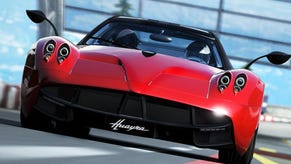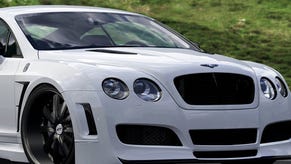Tech Analysis: Forza Motorsport 4
Including a comparison with GT5 2.0.
The changes made to the lighting model in Forza 4 are perhaps the most immediately noticeable graphical upgrade. There's a very strong impression that an HDR model has been employed, but the key enhancement is that Turn 10 has opted for image-based lighting to ensure that its cars sit perfectly within the environments. It's an idea that was first utilised in Criterion Games' brilliant Need for Speed: Hot Pursuit, and regular Digital Foundry readers will recall senior engineer Alex Fry's description of how IBL works.
"Image-based lighting basically means that the cars are lit by the image of the environment around them. So if you put that car anywhere in the world, it will be lit correctly. You haven't got to fake it, you haven't got to bake it. The cars are totally real-time image-based lit. That's one of the reasons they look good," Fry told us.
In concert with the phenomenally well-detailed car models we see in Forza Motorsport 4, the result can be quite beautiful. Image-based lighting relies a great deal on the quality of surrounding environments, and it's safe to say that Turn 10 can really deliver here - especially in its more challenging circuits such as the Bernese Alps and Camino Viejo de Montserrat.
To illustrate how good the effect is, the developer has even adjusted its pre-race attract sequence from the rolling vistas of Forza 3 to a series of shots that emphasise how good the cars look with the lighting scheme. The pre-race shots of the car in profile from Forza 3 have also been jettisoned in favour of cut-scenes that demonstrate how multiple cars look with the new lighting in effect.
While the system is clearly a major upgrade from Forza 3 - which often looks rather flat in comparison - there are some drawbacks. Firstly, Turn 10 does not appear to have implemented a filmic tone-map, which limits the dynamic range of the lighting and can lead to both black and white crush.
Secondly, unlike Need for Speed: Hot Pursuit (which in fairness, is running at a locked 30FPS), lighting in the environments appears to be "baked in" - pre-rendered, in effect. This means that while the overall look is quite beautiful, light sources are in fixed positions and do not move. So, the passing time of day and the dynamic lighting effects we see in games like Gran Turismo 5 are not present in Forza Motorsport 4. There are 26 circuits available in the Free Play mode of Forza 4, featuring 114 variations of which 30 are the same track running at a different time of day. Sunrise, day-time and sunset settings are available, although an "overcast" setting also crops up on the Top Gear circuit- but there's no night-time racing.
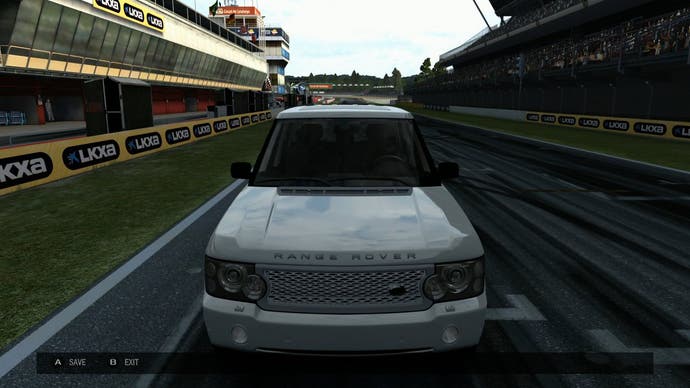
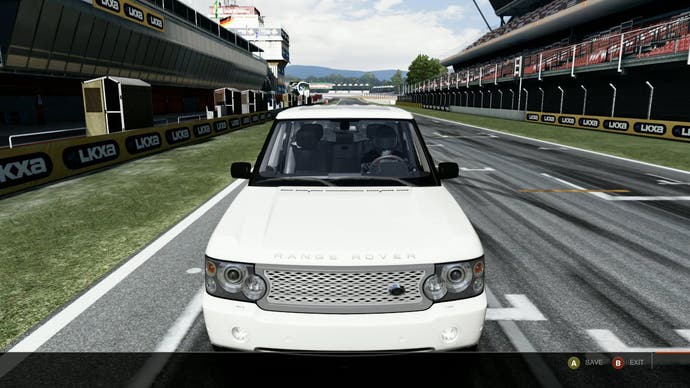
"With IBL, supporting the general look of night is not particularly hard. However, we take frame rate pretty seriously - we believe that having a solid 60 frames per second (FPS) experience with no tearing is very important for a simulation racing game," Turn 10 creative director Dan Greenawalt told ForzaMotorsport.net.
"Delivering night is about more than just getting the general look right. As we found on the original Forza Motorsport, having multiple headlight projections with multiple cast shadows is computationally heavy - even using clever tricks like we did on the less powerful original Xbox platform. This makes delivering a strong night racing experience very difficult at 60FPS without significant compromise."
The unyielding adherence to the 60FPS target frame-rate also rules out wet weather racing too, but Turn 10 also cites the lack of available data as a reason behind its omission from Forza 4.
"Regarding weather conditions, we do simulate different track temperatures. However, we did not get tyre data for wet conditions from our tire partners at Pirelli. We do have SAE data about wet conditions, but it's nowhere near as comprehensive as our Pirelli data. In order to simulate wet correctly, we'd like to get custom real-world test data to input into our system," Greenawalt continues.
"Of course, physics isn't the only difficult aspect of delivering wet conditions. Creating believable weather effects also depends upon gobs of particles and lots of shiny, reflective surfaces. There are several tricks for doing this, but it would still have made delivering the new graphical fidelity of FM4 at a solid 60 FPS nearly impossible in our development timeframe."
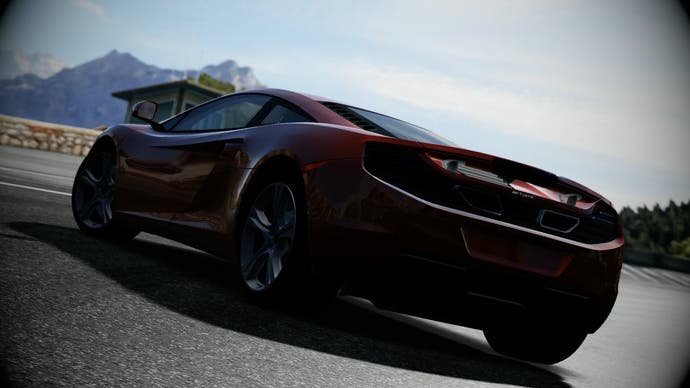

So how has Turn 10 spent the last couple of years, aside from improving its rendering spec? Of course, there's a boost in terms of basic content: the new Forza features 500 cars, with 410 of them are carried over from the last game and its DLC packs - while 90 are brand new. Five new tracks have been added, with the new "fantasy" Alps track (featured in the playable demo) once again demonstrating the kind of lush visuals the engine is capable of rendering away from the more sterile real-life circuits. Unfortunately two circuits - New York and Sidewinder - have been removed, with Turn 10 saying that they did not play nicely with its new engine spec.
In addition to the new content, Turn 10 has refocused its efforts on the quality and fidelity of its handling. A new partnership with Pirelli has resulted in a radically improved take on the tyre simulation, while steering and suspension have also been retooled, and more work has been done on the game's dynamic camera to better emphasis the effect of driving at speed over bumpy surfaces.
The bottom line is that the fundamentals of the Forza Motorsport 3 handling model remain, but the refinements made for the sequel have a subtle, but effective improvement on the feeling of the cars themselves.
Other enhancements suggest that Turn 10 is looking to extend its reach beyond the hardcore. The Top Gear tie-in is far closer than it is in GT5, with more in the way of non-racing based challenges, plus the reasonably priced car is included in the roster too. In the video above, you'll see our first efforts: our unimpressive lap time puts us between Andy Garcia and Alistair Campbell.
In addition to that, there's also the controversial inclusion of Kinect functionality too. The headline motion-driven interface sees steering reasonably implemented, but the lack of acceleration and brake control makes it feel like a bizarre throwaway novelty rather than any kind of viable replacement control scheme and feels oddly out of place in a focused, core game like Forza Motorsport.


